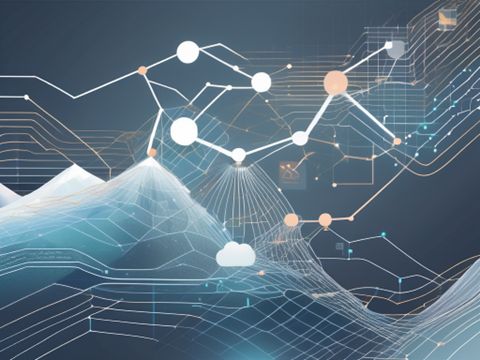
With major data breaches regularly dominating headlines, cybersecurity has rapidly become a top priority across every industry. Today’s extensively connected digital environment offers cybercriminals more potential attack surfaces than ever before. The widespread adoption of cloud computing, mobile devices, and the Internet of Things has exponentially expanded the vulnerabilities that hackers can exploit. No company, regardless of size or resources, is immune to cyber-attacks in this climate.
A 2022 report on data breach incidents found that a staggering 82% of breaches involved human error, highlighting the need for continuous cybersecurity awareness training. Phishing and social engineering remain particularly pervasive attack techniques. Ransomware attacks spiked 13% in 2021, paralyzing many organizations until hefty ransoms were paid.
The financial impacts and reputation damage of successful cyber-attacks underscore why robust information security is now mission-critical for businesses.
How Does Information Security Management Fit In?
Information security management refers to the processes and technologies focused on protecting an organization’s systems, data, and infrastructure from unauthorized access, cyber-attacks, and data breaches. This involves identifying risks, detecting threats, responding to incidents, and implementing controls across various levels:
- Network security of corporate infrastructure and endpoints
- Identity and access management of employees, devices, and third parties
- Application security for proprietary software and public-facing apps
- Cloud security for data stored with third-party providers
- Data security via encryption, tokenization, and access controls
- End-user education to prevent human-error breaches
Information security management provides a strategic, defense-in-depth approach to cybersecurity. Appointing a CISO and dedicated InfoSec team allows the organization to stay on top of threats and vulnerabilities.
The Role of Advanced Education in Information Security
Pursuing a Master’s degree in Information Security Management equips students with the advanced skills needed to manage cyber defenses. Many institutions also offer the master information security online program to meet the needs of working professionals. Its coursework covers topics like network security, compliance, risk management, and security architecture. Students gain hands-on experience through labs and projects.
The curriculum aligns with industry frameworks like NIST and CIS to provide immediately applicable concepts. A Master’s degree also helps security professionals move into leadership roles. The technical expertise and communication skills gained make candidates well-suited for positions like CISO, Security Director, or Security Architect. With the global cybersecurity talent gap projected to reach 3.5 million unfilled positions by 2025, specialized education, such as a cyber security course for directors, is key to building a successful InfoSec career.
7 Trends & Technologies Shaping Information Security In 2023
Cybersecurity is an incredibly dynamic field, with new technologies and approaches continuously emerging. Here are seven of the top trends and technologies that will shape information security in the year ahead:
1. The Increasing Impact of Artificial Intelligence (AI) on Cybersecurity
Artificial intelligence and machine learning tools have proven invaluable for reinforcing cyber defenses. AI enables the rapid analysis of massive data volumes to pinpoint novel threats and subtle anomalies that may signal impending attacks. It also automates tedious tasks like threat hunting, malware analysis, and vulnerability audits. By 2025, Gartner predicts AI will be used in 90% of new cybersecurity solutions. Key benefits include faster threat detection, proactive protection, and augmented human analyst capabilities.
2. The Shift Towards Zero Trust Security Architecture
The zero trust model is becoming widely adopted as a replacement for traditional network perimeter defenses. Zero trust is based on the concept of least-privilege access and strict identity verification for every user and device trying to access resources. Nothing is trusted by default. Microsegmentation, dynamic access policies, and multi-factor authentication are zero trust pillars. By 2023, at least 60% of enterprises will have zero trust frameworks in place, per Gartner. The zero-trust approach enhances the security of modern remote and cloud environments.
3. Rise of Cybersecurity Automation
Automating repetitive, manual security tasks allows analysts to focus on higher-value efforts. Security orchestration, automation, and response (SOAR) platforms combine multiple tools onto a single interface. Machine learning also enables the auto-remediation of common threats. According to one survey, 78% of organizations have implemented or plan to implement security automation. The proper use of automation increases efficiency, reduces costs, and accelerates incident response.
4. The Prominence of Cloud Security
As cloud adoption grows, securing cloud platforms, infrastructure, and storage becomes imperative. Native cloud security tools provide capabilities like encryption, role-based access controls, and configuration auditing. Third-party services deliver cloud access security brokers, cloud security posture management, and cloud workload protection. A 2022 report predicted the global cloud security market will reach $77 billion by 2030. Organizations are prioritizing protection as their data and workloads migrate to the cloud.
5. The Surge in Cyber Threat Intelligence
Cyber threat intelligence (CTI) entails gathering and analyzing data on new and emerging threats to gain actionable insights. By understanding threat actor tactics and tools, organizations can better prepare defenses and responses. Advanced CTI provides context beyond IOCs to map threat campaigns. According to Ponemon Institute, 65% of organizations have a CTI program. The global CTI market is forecast to grow by 15% CAGR through 2027 as organizations recognize its value in augmenting security.
6. Privacy-by-Design Approaches
Privacy-by-design calls for proactively embedding privacy protections throughout the entire product/service lifecycle. This ensures compliance with regulations like GDPR and CCPA, which impose steep fines for violations. It also upholds user trust. Core tenets include data minimization, anonymization, encryption, and opt-in consent mechanisms. Gartner predicts that by 2023, 75% of the global population will have personal data shielded by privacy laws, underscoring the importance of privacy-by-design.
7. Growing Importance of Blockchain in Cybersecurity
Blockchain’s decentralized, distributed ledger architecture offers inherent security benefits for certain applications like credential verification, identity management, and supply chain tracking. Its immutable audit trail enhances transparency and accountability. Using blockchain to secure IoT devices also shows promise. Per Juniper Research, cybersecurity will remain blockchain’s dominant use case through 2023. As blockchain technology matures, its cybersecurity applications will likely continue expanding.
Conclusion
With cyber risks multiplying, robust information security is crucial for organizational success. Advances in AI, cloud security, blockchain and zero trust are empowering defenders to detect and mitigate threats faster. To build effective defenses, organizations must invest in cutting-edge security solutions, skilled talent and adaptive strategies. As threats grow more severe, the demand for security expertise will intensify.





